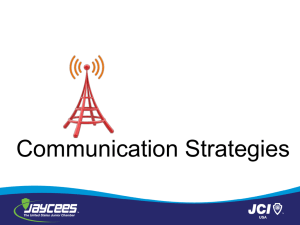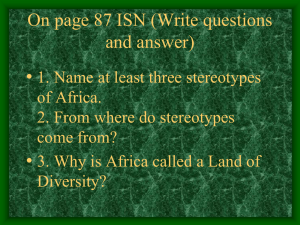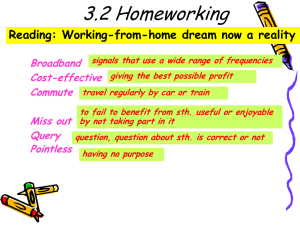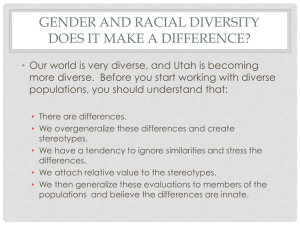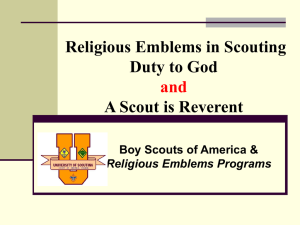full notes
advertisement
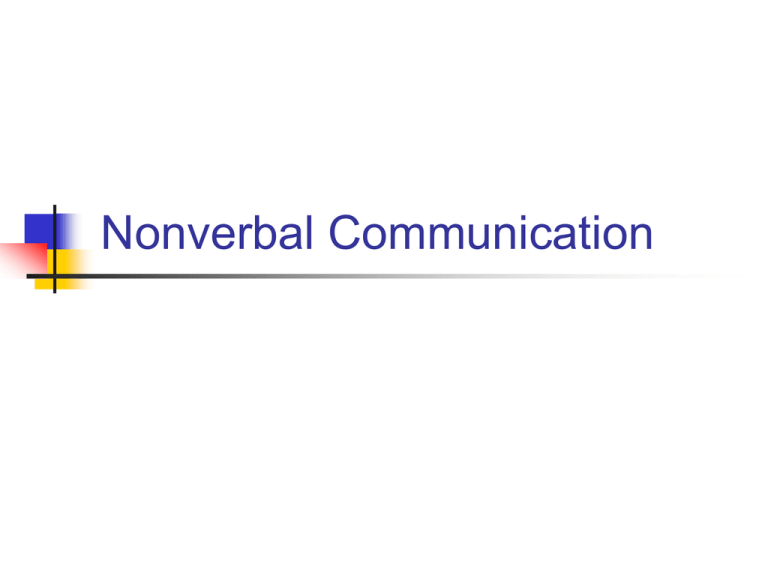
Nonverbal Communication Functions Impression management Influence perception Appearance matters Sign of membership Visibility of logos Team uniform Functions cont’d Regulate communication Eye contact Finger waving Touch Paraverbal language Functions cont’d Provide feedback Facial expressions Roll eyes Fidgeting Emphasize meaning “The look” Functions Substitute for words cont’d Emblems Thumbs up Express social relationships Power Compliance Affect management Social intimacy Body Language Proximity Use of space Seating dynamics Touch Interjection Ask before touching Body Language Eye Contact Cultural differences influence use, perception of eye contact Indicates listening Can make others feel valued Body Language Facial Expressions Six universal expressions Varied interpretations Indicate feelings, level of understanding Body Language Gestures Used to gain and maintain attention Are culturally based Facilitate the message being sent Influence group affect Body Language Posture Demonstrates confidence Expresses feelings Influences impressions Shows physical well-being Body Language Olfactics Culturally-based Can create intimacy Beware of sensitivities Physical Appearance Demonstrates fitness Shows confidence, competence Impacts stereotypes Body Language Chronemics Use of time Culturally-based Is an expression of power Is an expression of ‘other orientation’ Paraverbal Language Pitch Implies competence, confidence Suggests authority, friendliness Adjust for audience and task goals Be alert to concerns related to hearing acuity Use consciously Paraverbal Language Rate Speed of speech We listen faster than we can talk Be aware of audience Influences stereotypes Paraverbal Language Volume Loudness Projection vs. yelling Check with participants Inflection Indicates question or assertion Be aware of “uptalk” Paraverbal Language Accents Different pronunciation sounds Influences stereotypes Be alert to the impact on the audience Paraverbal Language Silences and pauses Gives time for people to think Helps to make a point Be aware of overuse Paraverbal Language Miscellaneous sounds “Umm,” “ahh,” “hmm,” “tsk”, “pshaw” Used to hold speaking turn Speaker may sound uncertain Symbolic Language Pictorial symbols to convey messages Logos Road signs Emblems Written Language In the profession Memos, letters Reports Evaluations Marketing materials Electronic communications Effective writing Well-focused Readable Precise Accurate Active voice Gender-neutral Electronic Communication E-mail Advantages Worldwide in an instant Broadcast to many at one time Written record Disadvantages Two-dimensional Decoding issues No privacy Electronic Communication Listserv Transmits to groups of people Worldwide access Great for mass feedback Not everyone has access Private vs. public lists Electronic Communication Cautions Only use when it is best suited Postings may be seen by unintended audiences Beware of ‘Reply to All’ Official record No privacy expectations

